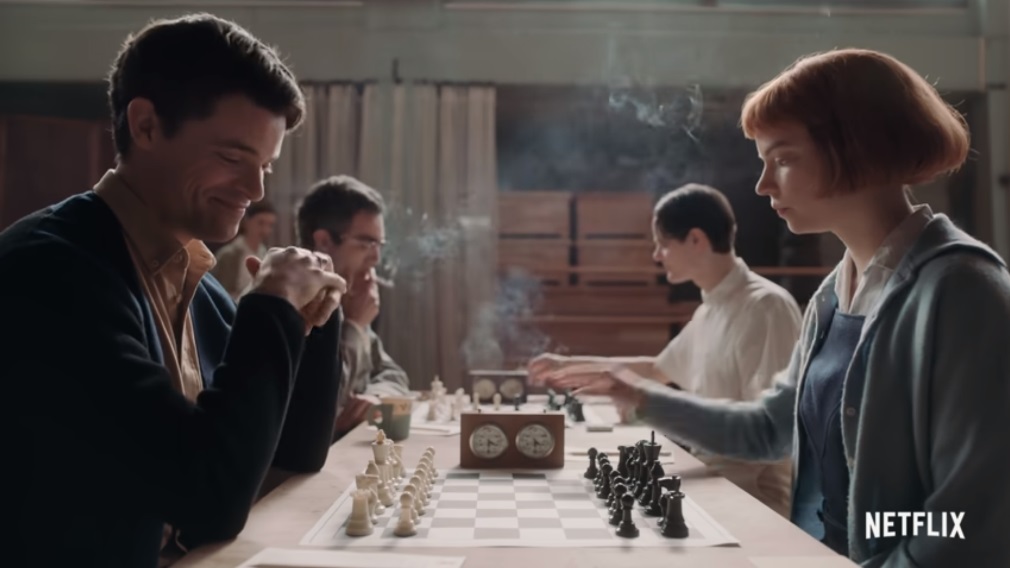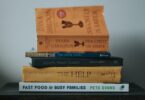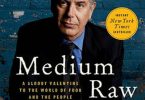After the recent success of Scott Frank’s The Queen’s Gambit, based on Walter Tevis’ novel, it has been reported that more than 20 million new members joined official chess clubs worldwide. In an age where the new is the king, where our just-purchased last-model smartphones become obsolete in a matter of months, it might come as a surprise that such an ancient game that can barely be traced back to its origins, becomes the star of the moment.

As Spanish author Irene Vallejo says, it’s the new inventions that have to fight for their place in society and they vanish quickly; but inventions that have been around for centuries have achieved a so perfect version of themselves that it is practically impossible to overtake them – can you imagine a better version of the wheel? Indeed, chess has proven time and time again to have an extraordinary ability to stay current and keep a very special place at the avant-garde of society in many ways.
For those who are already initiated and chess-literate, The Queen’s Gambit might have refreshed old memories. We are sure you will appreciate a My Great Predecessors first edition signed by Gary Kasparov; a My 60 Memorable Games first edition signed by Bobby Fischer, a hand-written letter from José Capablanca; or Spassky-Fischer Das Grosste Schach-Duell Der Geschichte, a German book about a Fischer vs Spassky match, signed by them both.
However, for those who have barely scratched the surface of this game or have been suddenly struck by it after having seeing the series, let us tell you something more about this fascinating world.
They say reality outweighs fiction, so if you enjoyed Queen’s Gambit, here are some threads you can pull to follow your interest from fiction into reality.
Chess, Power & Politics:
One knight against the other, one army against the enemy: in the game itself lies the perfect analogy. Chess has always been surrounded by politics and the fight for power. Elisabeth Harmon, the main character of the Queen’s Gambit series, is an introvert who finds it hard to navigate the political influence of her profession, uncomfortable to be in the spotlight, and confusing to be trapped within institutions, lobbies and other groups who seek to use her in the pursuit of their own interests.
There are many examples of this in reality, but maybe the most known is the story of Bobby Fischer and his victory against the World Champion Spassky during the Cold War, the most-followed chess match ever.
Bobby Fischer was, just like Elisabeth Harmon, a young American talent with limited abilities in navigating social interaction. He became the youngest ever chess Grand Master at the age of 15. He had a somewhat chaotic and eccentric personality which probably found shelter in the enclosed world of the chessboard. However, once he won the world championship against Boris Spassky in 1972, the repercussions of the match went far beyond the board.
After decades of Soviet reign in the chess world, and during the most intense years of the Cold War, winning this match became a matter of national patriotism and an ideological victory against communism. The US government had to intercede to make sure Fischer attended the event and the prize fund had to be increased. Fischer’s eccentricities were almost unbearable during the games, where he continued to complain about the setting conditions. After Spassky accepted an unprecedented request to play in a hidden room far from the spotlight of the cameras, Fischer managed to beat him and became World Champion.
From that moment, Fischer’s life underwent a series of events difficult to explain. He refused to ever defend the title, disappeared multiple times, broke US laws by playing a re-match against Spassky in former Yugoslavia, and found himself exiled.
There is plenty of literature about Fischer’s life, but Bobby Fischer Goes to War, by David Edmonds & John Eidinow extensively covers the world tournament of 1972. Echoes of this battle are clearly seen in The Queen’s Gambit.
Within the Soviet Union itself, chess had a very relevant role at that time. One book that contains many controversial affirmations, but throws important light into the importance and use of chess from the power, is The KGB plays chess, by Grand Masters Boris Gulko and Viktor Korchnoi, journalist Yuri Felshtinsky and a former KGB colonel: Vladimir Popov.
Chess & Technology:
In The Queen’s Gambit, Beth is first fascinated by the board itself, its squares and pieces. She learned almost intuitively, but things started to get serious when her mentor, Mr. Shaibel, handed her a book to study chess openings. These openings are a set of pre-thought strategies that have survived and improved over generations due to literacy and writing. Chess has always been hand-in-hand with the technology of writing and books, which helped the persistence of techniques over time, and allowed it to become a cultural game, not only a talent-based one.
Just as we can find early copies of chess books back to the 9th and 10th century, and follow their spread after the invention of the press, chess also played a vital role in the development of computer technology and the relationship that we humans have with our own created machines.
In 1996, a computer called Deep Blue was the first one to beat a chess world master when it did so against Gary Kasparov. However, it lost the overall game 4-2 and had to return as an improved version in 1997 and became the first machine to beat a human under official tournament conditions. Its use of massive calculation power cracked the game by brute force and many thought it will be the end of chess since machines will be forever their masters.
However, machines don’t understand human logic and play by brute calculation, so instead of fighting machines, chess masters merged AI and human intelligence into their game. It was proven that a combination of using the calculation force of a machine combined with the intuition and strategy of a human overtakes both machines or humans alone. These continued experiments reshape how we think about technology, AI, and our future surrounded by computers. Kasparov, by the way, developed a new version of chess called Arimaa that is very difficult for computers to win against humans. Are there certain mental abilities that will always be exclusive to humans, or can machines undertake us in each one of them? Chess explores that frontier.
If you are interested in this area, you can read Kasparov and Deep Blue, The Historic Chess Match Between Man and Machine, by Bruce Pandolfini; or How to Use Computers to Improve your Chess, by Christian Kongsten.

Chess & Feminism:
If one thing stands out in The Queen’s Gambit, it is its stand for feminism, showing a strong female character that fights her way alone through a male-dominated sport. It is precisely here where we find far more inspiring examples in reality, which deserve equal, if not more, fame.
A gambit is a chess move that consists of sacrificing a piece in exchange for positional advantage. The higher the value of the sacrificed piece, the higher the strategic advantage that must be acquired.
In December 2017, it was announced that the Women’s Chess World Championship would take place in Saudi Arabia. Only a couple of weeks later, Anna Muzychuk, the double-world champion at that time, played a gambit in the form of a Facebook post: she announced that she refused to defend her titles and play in a country where she would have to be accompanied permanently, wear a hijab, and be treated as a second-class citizen. By doing that, she lost her two world champion titles and the prize that she would have won if she kept them; which went up to $160,000. Her Facebook post became the most shared and liked post ever published by a chess player, and we can only hope that the positional advantage won by Muzychuk’s bravery outweighs the cost of her sacrifice. At least, Anna has never seemed to regret her decision.
Even though Elisabeth in Queen’s Gambit is not based on a real person, there is a real woman that disrupted the male chess domination and beat the best world players, and her name is Judit Polgár.
Judit Polgár, born in 1976, is the youngest of three sisters born in Hungary. Her parents defended the idea that geniuses are made, not born; and wanted to prove that by home-schooling their daughters and particularly helping them excel at the game of chess.
Judit started learning in earnest when she was 5, as little by little her sister’s coach accepted her into his lessons. She quickly showed tremendous skills. At the age of 14, she became an International Master, and at 15 and 4 months, she broke Bobby Fischer’s record and became the youngest ever player to become a Grand Master. Her sisters Susan and Sofia are also Grand Master and International Master respectively.
Even though women were allowed in general tournaments, they would usually participate in separate tournaments. Polgár, however, decided not to compete in the women’s championship and to join the general tournaments. Even though she was succeeding as a teenager, she still had to hear the world’s top players stating that she was a strong player for being a woman, but still just a woman. She became one of the world’s top ten players, beating world champions like Kasparov, Karpov, and Spassky along the way.
Polgár wrote a set of three books about her journey to the top of the chess world. Within this journey, there are many stories that deserve attention and could make a thrilling novel. For instance, there was a highly controversial incident during a match against Kasparov in Madrid where he violated a chess rule and she, a 17-teenager intimidated by confronting her childhood idol, didn’t dare to reach out to the referee.
We hope these stories have inspired you to dive deeper into the ocean of books about chess. There is a vast number of biographies written about famous players, and all of them have their own points of interest. Similarly, highly collectible items can be found easily, just search for your favorite players.
Finally, if you have been seduced by the techniques of the game, if you want to explore the strategy, creativity, and psychology that lies underneath, if you want to learn the names of the squares and become chess-literate, you know what you have to do: get yourself a book!
List of Suggested Books:
- Chess Fundamentals, by Capablanca
- The Queen of Katwe by Tim Crothers
- The Rating of Chessplayers, Past and Present, by Elo
- Chess for Beginners by Yelizaveta Orlova
- Chess Text in the English Language printed before 1850, by Whyld
- Betts’ CHESS: An Annotated Bibliography of Works published in the English Language 1850-1968
- My Great Predecessors, by Kasparov
- My 60 Memorable Games, by Fischer
- Karpov’s Strategic Wins, by Tibor Károlyi
- Il Gioco de Gli Scacchi, by Pietro Carrera
- Modern Chess Openings, Richard Clewin Griffith
- Early Italian chess books, 16th century:
- Translated version of Spanish Ruy López: https://www.biblio.com/book/giuoco-gli-scacchi-di-rui-lopez/d/1353993359
- Gianutio Horatio: https://www.biblio.com/book/libro-nel-quale-tratta-della-maniera/d/1042003880









Do you buy books from a private party? I have 800 that I inherited and want to sell, live in Los Angeles, Calif, San Fernando Valley.